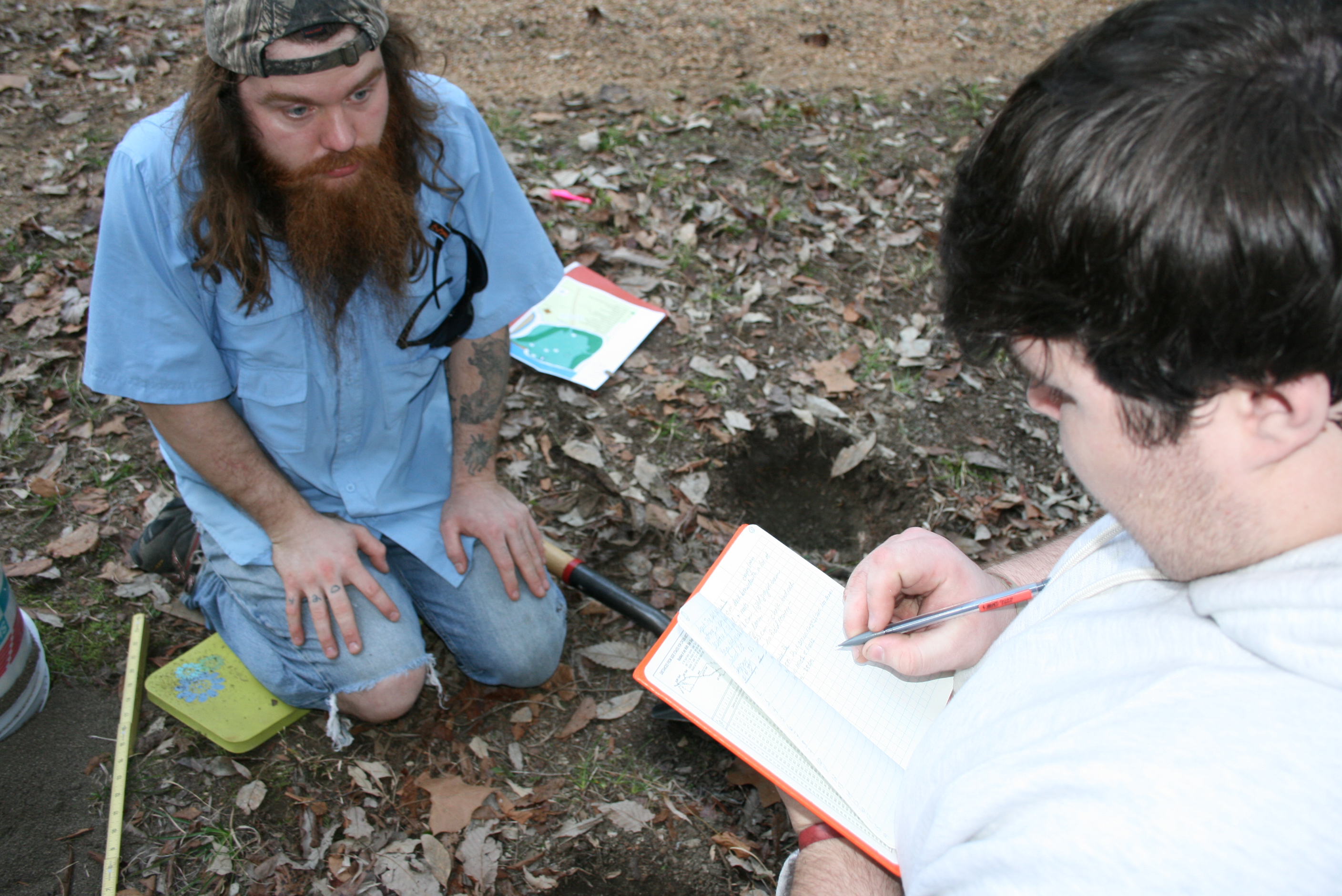By Skyler Browder Tuesday January 17, 2017:
Tuesday January 17, 2017:We started out by plotting and planning where and how we were going to place our new informational signs around the fort. While doing so we had to keep in mind of places that might have already been excavated, or places that might affect future digs. There are 12 signs in total that we plan to put up throughout the fort. After the spots were chosen, we began to start digging and sifting the dirt for the first two holes. The first hole we were able to dig about 23 cm before we hit chalk, and were not able to go much further. The second hole was roughly 91 cm away. We were able to dig about 30 cm before we hit chalk again. The soil layers for the first hole were 0-8 cm dark brown clayey loam with a lot of gravel and roots. It turns out that the gravel was all brought in about 40 years ago when parts of the site were used for a camp ground. The next layer was roughly 8-21 cm light grayish brown clayey loam. Then, at 21-23 cm we hit chalk bedrock. In the first hole there was "no field recovery," which means that we did not find any artifacts. For hole two, from 0-9 cm it was dark brown clayey loam with less gravel than hole one. From 9-28 cm, a light grey with a powdery chalk was mixed into the soil. Then, from 28-30 cm it was chalk, bedrock. There was also no field recovery for the second hole.
Thursday, January 19, 2017:
Today we were not able to go out into the field due to inclement weather. Instead of doing fieldwork, we stayed in the lab and first went over the basics for taking down Field Specimen logs and the proper way to label the bags. Each Field Specimen number, or F.S. number, refers to the specific part of the fort where an artifact was found. These numbers help us keep the artifacts associated with their context. We also discussed the proper utensils to use in the lab to label specific artifacts, and how to do so. After we got use to writing with calligraphy ink, we all practiced labeling, allowing us to get hands-on with some of the artifacts that have been found in previous years. Each artifact is labeled with its F.S. number, so that we will always know where its place was at the fort.
Dr. Dumas's note: Imagine having an ancient, fragile book. Imagine that this is the only book about a particular place and time in history. Imagine that some of the pages are missing--some have rotted and some have been stolen. Now imagine that the only way to read what remains of the important story inside is to carefully take part the book, page by page, word by word. Wouldn't it make sense to keep all those pages in order and to keep words found together on the page all together back in the lab, where you can reassemble the story? This is the point of CONTEXT in archaeology. Archaeological sites are like history books, many of them rare. Artifacts are the words, layers of artifacts in the ground are the sentences. Some of the words have deteriorated, some taken. To make sense of what's left, we keep up with layers and assign everything that we remove with a label, such as an F.S. number.